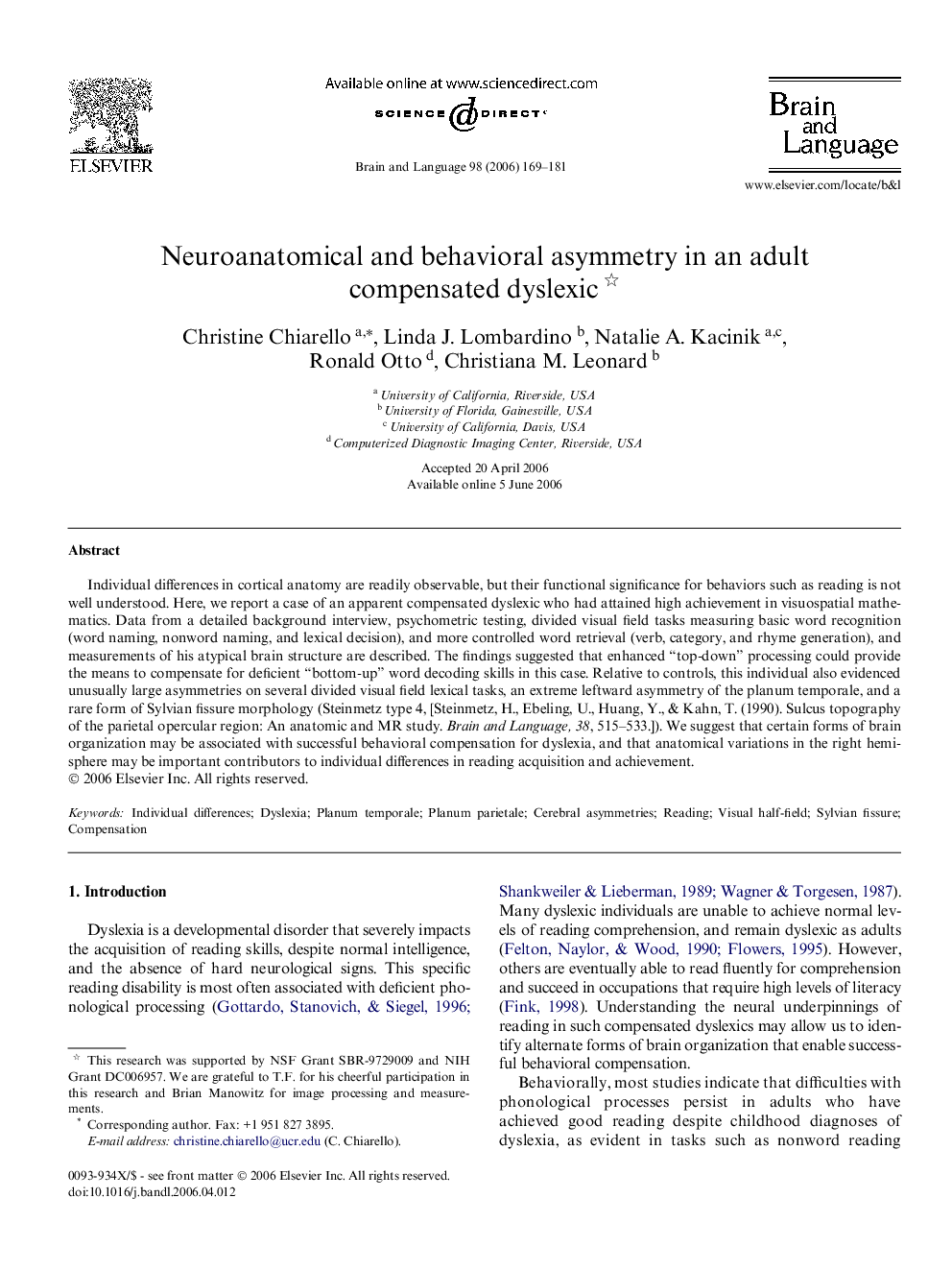| Article ID | Journal | Published Year | Pages | File Type |
|---|---|---|---|---|
| 926132 | Brain and Language | 2006 | 13 Pages |
Individual differences in cortical anatomy are readily observable, but their functional significance for behaviors such as reading is not well understood. Here, we report a case of an apparent compensated dyslexic who had attained high achievement in visuospatial mathematics. Data from a detailed background interview, psychometric testing, divided visual field tasks measuring basic word recognition (word naming, nonword naming, and lexical decision), and more controlled word retrieval (verb, category, and rhyme generation), and measurements of his atypical brain structure are described. The findings suggested that enhanced “top-down” processing could provide the means to compensate for deficient “bottom-up” word decoding skills in this case. Relative to controls, this individual also evidenced unusually large asymmetries on several divided visual field lexical tasks, an extreme leftward asymmetry of the planum temporale, and a rare form of Sylvian fissure morphology (Steinmetz type 4, [Steinmetz, H., Ebeling, U., Huang, Y., & Kahn, T. (1990). Sulcus topography of the parietal opercular region: An anatomic and MR study. Brain and Language, 38, 515–533.]). We suggest that certain forms of brain organization may be associated with successful behavioral compensation for dyslexia, and that anatomical variations in the right hemisphere may be important contributors to individual differences in reading acquisition and achievement.
